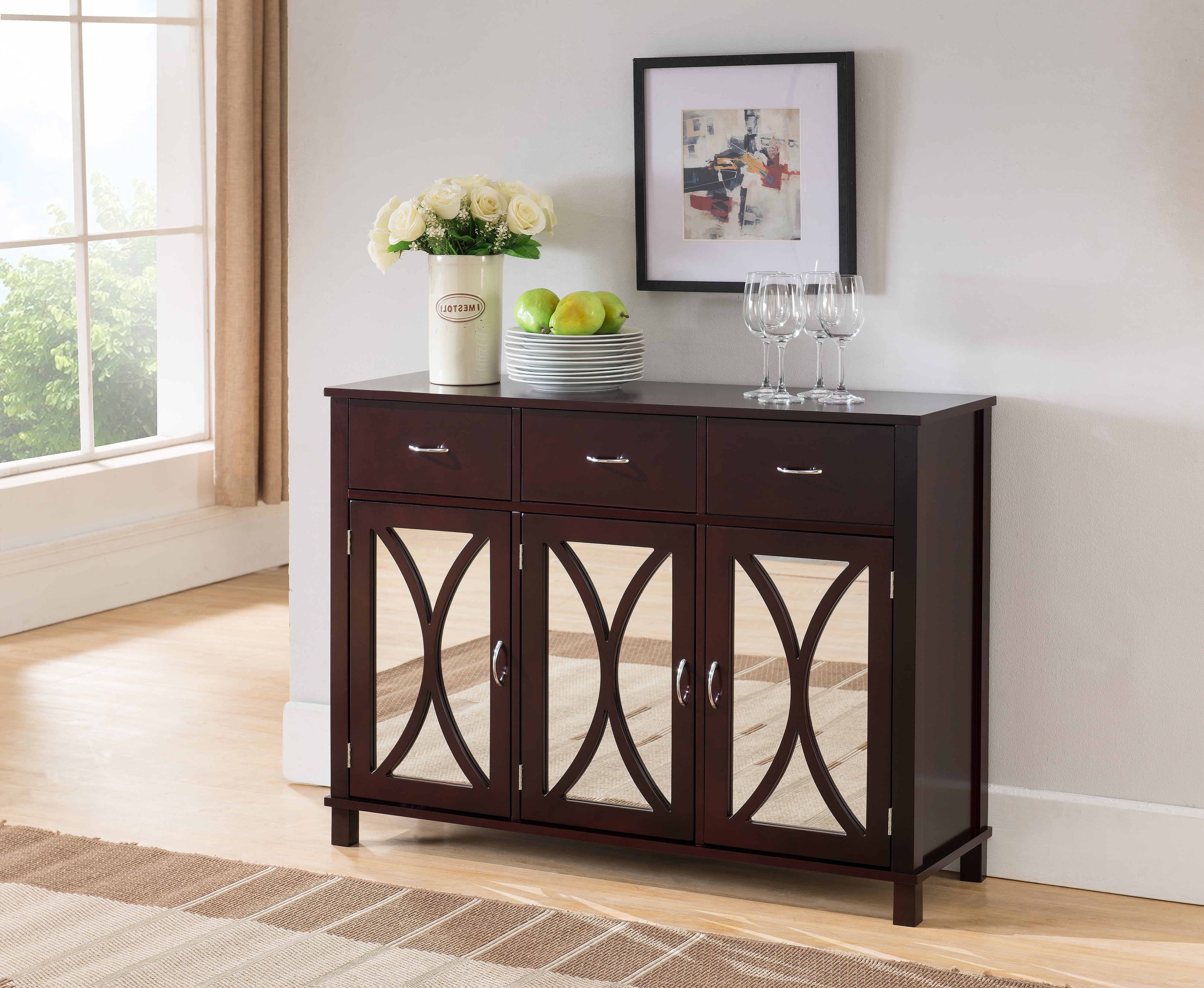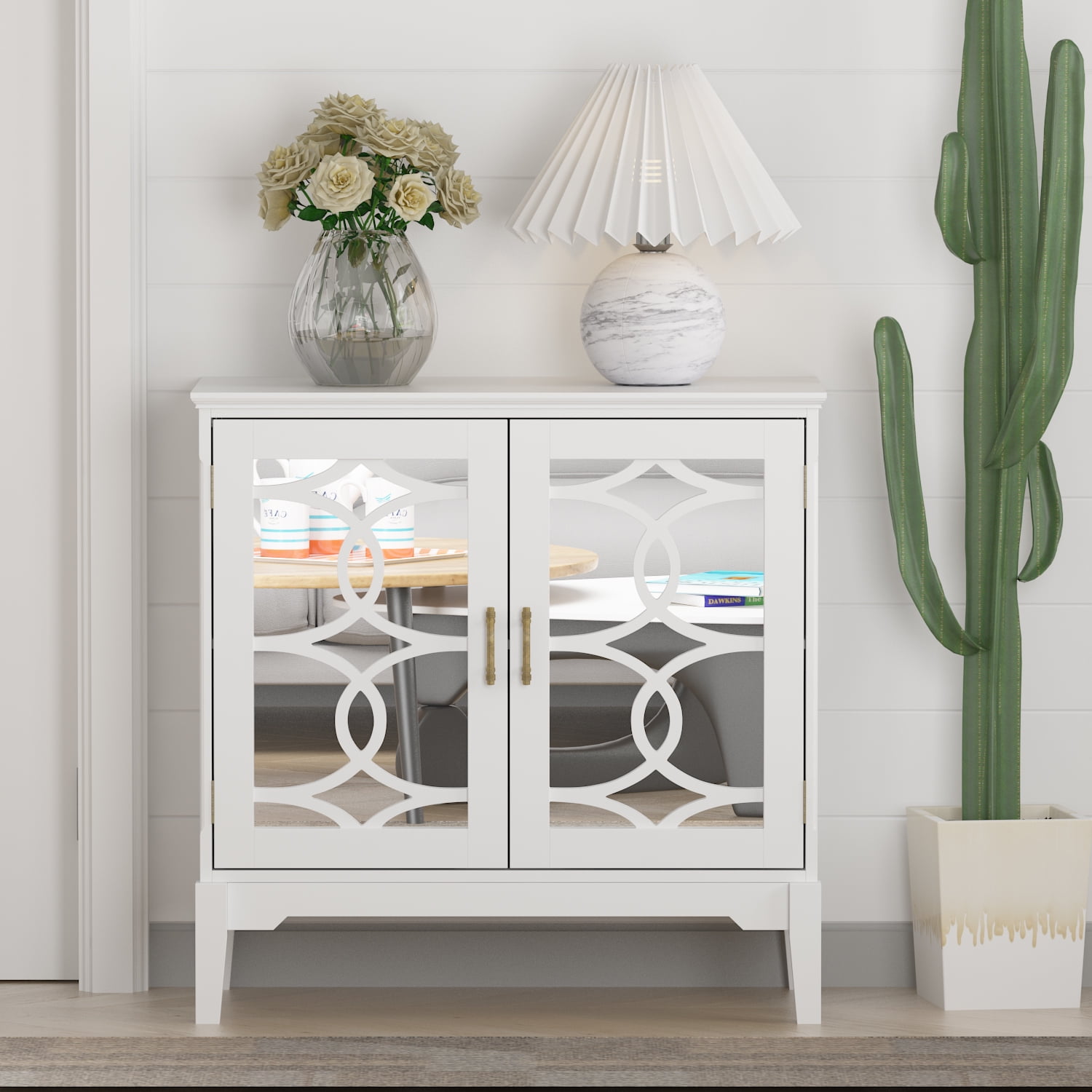The Evolution of the Accent Cabinet: Privilege Mirrored Accent Cabinet

The accent cabinet, a versatile and decorative piece of furniture, has undergone a fascinating evolution, reflecting shifting tastes, cultural influences, and technological advancements. From its humble beginnings as a functional storage solution to its current role as a statement piece, the accent cabinet has adapted to changing needs and aesthetic preferences.
Early Forms and Influences
The earliest forms of accent cabinets can be traced back to ancient civilizations. In ancient Egypt, elaborate chests and coffers were used to store valuables and personal belongings, often adorned with intricate carvings and painted with vibrant colors. These early forms served both practical and symbolic purposes, reflecting the wealth and status of their owners. In ancient Greece and Rome, cabinets evolved into more refined forms, often incorporating decorative elements such as bronze fittings, marble inlays, and intricate mosaic work. These cabinets were often used to display precious objects, books, and scrolls, serving as a testament to the intellectual and cultural pursuits of their owners.
The Rise of the Cabinet in the Renaissance
The Renaissance period witnessed a significant shift in the design and purpose of accent cabinets. As interest in classical art and architecture surged, cabinets began to be viewed as works of art in their own right. Craftsmen of the era, inspired by the rediscovery of ancient Greek and Roman designs, created elaborate cabinets with intricate carvings, marquetry, and veneers. These cabinets were often commissioned by wealthy patrons and used to display collections of art, books, and scientific instruments.
The Baroque and Rococo Eras
The Baroque and Rococo periods, known for their opulent and decorative styles, further influenced the evolution of the accent cabinet. Cabinets during this era were characterized by dramatic curves, elaborate ornamentation, and rich materials such as mahogany, ebony, and ivory. These cabinets were often adorned with gilded carvings, intricate marquetry, and ornate hardware, reflecting the extravagant tastes of the aristocracy.
The Victorian Era and the Rise of Mass Production
The Victorian era saw a shift towards a more eclectic and sentimental style in furniture design. Accent cabinets during this period often featured intricate carvings, floral motifs, and dark, rich woods. The advent of mass production in the late 19th century made cabinets more accessible to a wider range of consumers, leading to a proliferation of styles and designs.
The 20th Century and Beyond
The 20th century brought about a wave of modernism in furniture design, with a focus on clean lines, simplicity, and functionality. Accent cabinets during this period often featured geometric shapes, minimalist ornamentation, and innovative materials such as metal and glass. The mid-century modern movement, with its emphasis on natural materials and organic forms, also influenced the design of accent cabinets, leading to the creation of pieces with sleek lines and a sense of timeless elegance.
Contemporary Accent Cabinets
Contemporary accent cabinets reflect a fusion of styles and influences, incorporating elements of traditional, modern, and industrial design. They are often characterized by their versatility, functionality, and adaptability to different interior styles. From minimalist designs to bold statement pieces, contemporary accent cabinets offer a wide range of options to suit individual tastes and preferences.
Design and Functionality of Accent Cabinets

Accent cabinets, often referred to as sideboards or buffets, are versatile pieces of furniture that add both style and functionality to contemporary homes. They seamlessly blend aesthetics with practicality, serving as storage solutions, display platforms, and room dividers.
Styles and Aesthetics of Accent Cabinets
Accent cabinets come in a wide array of styles, catering to diverse tastes and design preferences.
- Traditional: Characterized by intricate carvings, ornate details, and rich wood finishes, traditional accent cabinets exude timeless elegance. They often feature classic shapes, such as the Chippendale or Queen Anne styles, and are typically made from solid hardwoods like mahogany or cherry.
- Modern: Modern accent cabinets prioritize clean lines, minimalist forms, and geometric shapes. They often incorporate materials like metal, glass, and high-gloss finishes, creating a sleek and contemporary aesthetic.
- Minimalist: Minimalist accent cabinets embrace simplicity and functionality. They feature simple, uncluttered designs with a focus on clean lines and natural materials like wood or metal.
- Eclectic: Eclectic accent cabinets blend elements from different styles, creating a unique and personalized look. They may feature a mix of materials, textures, and colors, reflecting the owner’s individual taste and style.
Functions of Accent Cabinets in Contemporary Homes
Accent cabinets serve various functions in contemporary homes, adding both practicality and visual appeal.
- Storage: Accent cabinets provide ample storage space for various items, from books and decorative objects to electronics and household essentials. They often feature drawers, shelves, and cabinets to organize and conceal belongings, creating a clutter-free and organized living space.
- Display: Accent cabinets serve as display platforms for showcasing cherished items, artwork, or decorative pieces. Open shelves, glass doors, or built-in lighting enhance the display, creating focal points within the room.
- Room Division: Accent cabinets can act as room dividers, separating different areas within an open floor plan. They provide visual separation without creating a physical barrier, allowing for a sense of openness while defining distinct spaces.
Impact of Size, Shape, and Material Choices
The size, shape, and material choices of an accent cabinet significantly influence its overall design and functionality.
- Size: The size of the accent cabinet should be proportional to the space it occupies. A large accent cabinet can create a statement in a spacious room, while a smaller one can be ideal for a compact space.
- Shape: The shape of the accent cabinet can impact its functionality and aesthetic appeal. A rectangular cabinet provides ample storage space, while a curved or rounded cabinet adds a touch of elegance.
- Material: The material choice influences the style, durability, and overall look of the accent cabinet. Wood cabinets offer warmth and tradition, while metal cabinets provide a modern and industrial feel. Glass cabinets add a touch of sophistication and allow for displaying items.
Accent Cabinets in Interior Design

Accent cabinets are versatile pieces of furniture that can elevate the style and functionality of any room. They seamlessly blend form and function, adding a touch of elegance and practicality to various interior design styles.
Accent Cabinet Integration in Different Room Types, Privilege mirrored accent cabinet
Accent cabinets can be effectively incorporated into a variety of rooms, each adding a unique flair and enhancing the overall ambiance.
- Living Rooms: Accent cabinets can serve as focal points in living rooms, providing display space for cherished items, books, or decorative accents. They can also house entertainment systems, creating a dedicated media center.
- Bedrooms: Accent cabinets in bedrooms can be used as nightstands, offering a stylish and functional surface for lamps, books, and personal items. They can also be placed at the foot of the bed, adding storage for extra bedding or clothing.
- Dining Rooms: Accent cabinets can enhance the dining room’s elegance, serving as buffets for serving dishes, storing linens, or displaying chinaware.
- Entryways: Accent cabinets in entryways create a welcoming atmosphere, providing a dedicated space for keys, mail, or other essential items. They can also serve as a stylish display for artwork or decorative accents.
Designing a Living Room with an Accent Cabinet
A living room incorporating an accent cabinet can be designed to maximize both aesthetics and functionality.
An accent cabinet can be placed strategically against a wall, acting as a focal point and creating a sense of balance.
A neutral-toned sofa placed opposite the cabinet can create a visually appealing and comfortable seating area. The cabinet can be used to display decorative items, such as plants, sculptures, or framed artwork, enhancing the room’s personality. A rug placed beneath the cabinet and sofa can unify the space, while soft lighting can create a warm and inviting ambiance.
Styling Accent Cabinets Effectively
Accent cabinets can be styled effectively to complement the overall design aesthetic of a room.
- Accessories: The use of accessories, such as vases, candles, or books, can add personality and visual interest to the cabinet. These items should be carefully curated to reflect the room’s style and the homeowner’s taste.
- Lighting: Lighting plays a crucial role in accentuating the beauty of the cabinet and its contents. Spotlights or table lamps can highlight specific items, creating a dramatic and captivating effect.
- Color Schemes: The color scheme of the cabinet and its surroundings should be carefully considered. A contrasting color scheme can create a bold statement, while a monochromatic scheme can create a sense of sophistication.
A privilege mirrored accent cabinet can add a touch of elegance and functionality to any room. Its mirrored surface can create an illusion of space and reflect light, brightening the area. While a privilege mirrored accent cabinet may not offer extensive storage, it can serve as a decorative focal point.
For those seeking more practical storage solutions, a hanging cabinet for bedroom can be a valuable addition. Hanging cabinets provide ample storage space for clothes, accessories, and other personal items, keeping your bedroom organized and clutter-free. Ultimately, the choice between a privilege mirrored accent cabinet and a hanging cabinet depends on your individual needs and aesthetic preferences.
A privilege mirrored accent cabinet adds a touch of elegance and functionality to any room. Its mirrored surface can create the illusion of more space, while its storage compartments offer a practical solution for organizing small items. For a more substantial storage solution, consider a 60 unfinished sink base cabinet , which can be customized to fit your needs.
While the privilege mirrored accent cabinet provides a decorative touch, a larger cabinet like this can be a functional centerpiece for your kitchen or bathroom.